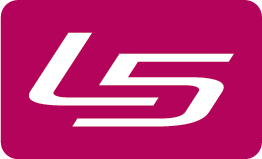Hei!
Får å se denne videoen må du være logget inn og ha et aktivt abonnement.
Du kan klikke på "Få tilgang til alt for kun 129,- per mnd" knappen for å opprette en konto.
Slik er prosessen:
Du fyller inn epostadressen din, lager deg et passord og legger til et betalingskort.
Det er alt som skal til for at du kommer i gang med din 7 dagers gratise prøveperiode!
Når det er gjort kan du se denne og alle de andre forelesningene på l5.no.
Og husk, det er ingen bindingstid og du kan si opp når som helst... men det er selvsagt best å bli værende, slik at du kan lære nye ting hver dag!
The Hand & Wrist in Sports Management
The Hand & Wrist in Sports
Episode 1:
Objective Assessment of Sporting ‘& Non-Sporting’ Management
Subjective information is an important aspect of our clinical examination however, without objectivity we are at risk of missing key components in our assessment of Hand-Wrist injuries. This can significantly impact on safe and timely return to sport. In this episode we will review which objective measures, and special tests, are most indicative for these areas. Although we will mainly consider the sporting environment, all the tests described are applicable for the non-sporting population.
Learning points:
1. Identify the most suitable objective measures for Hand-Wrist sporting injuries
2. Improve diagnostic, prognostic, maintain-in-play & return-to-play strategies aiming at targeting enhanced training availability
3. Provide more confidence when assessing Hand-Wrist injuries
Episode 2:
Management of Sporting ‘& Non-Sporting’ Management
In recent years, there has been contradictory information and emerging debate on the use of hands-on techniques. This episode will initially rationalise hands-on techniques, which can be considered as part of a multimodal approach towards injury management for the hand-wrist region. Rehabilitation at the hand-wrist is generally considered the mainstay of any injury management program. This is generally supported by evidence not only at the hand-wrist, but in other anatomical regions. This episode will therefore consider an approach to enhance exercise prescription, especially with consideration of key principles.
Learning objectives:
1. Rationalise the use of hands-on techniques
2. Extend the understanding of exercises for the Hand-Wrist, with Inclusion of the kinetic chain to optimise rehabilitation
3. Provide more confidence when managing Hand-Wrist injuries
